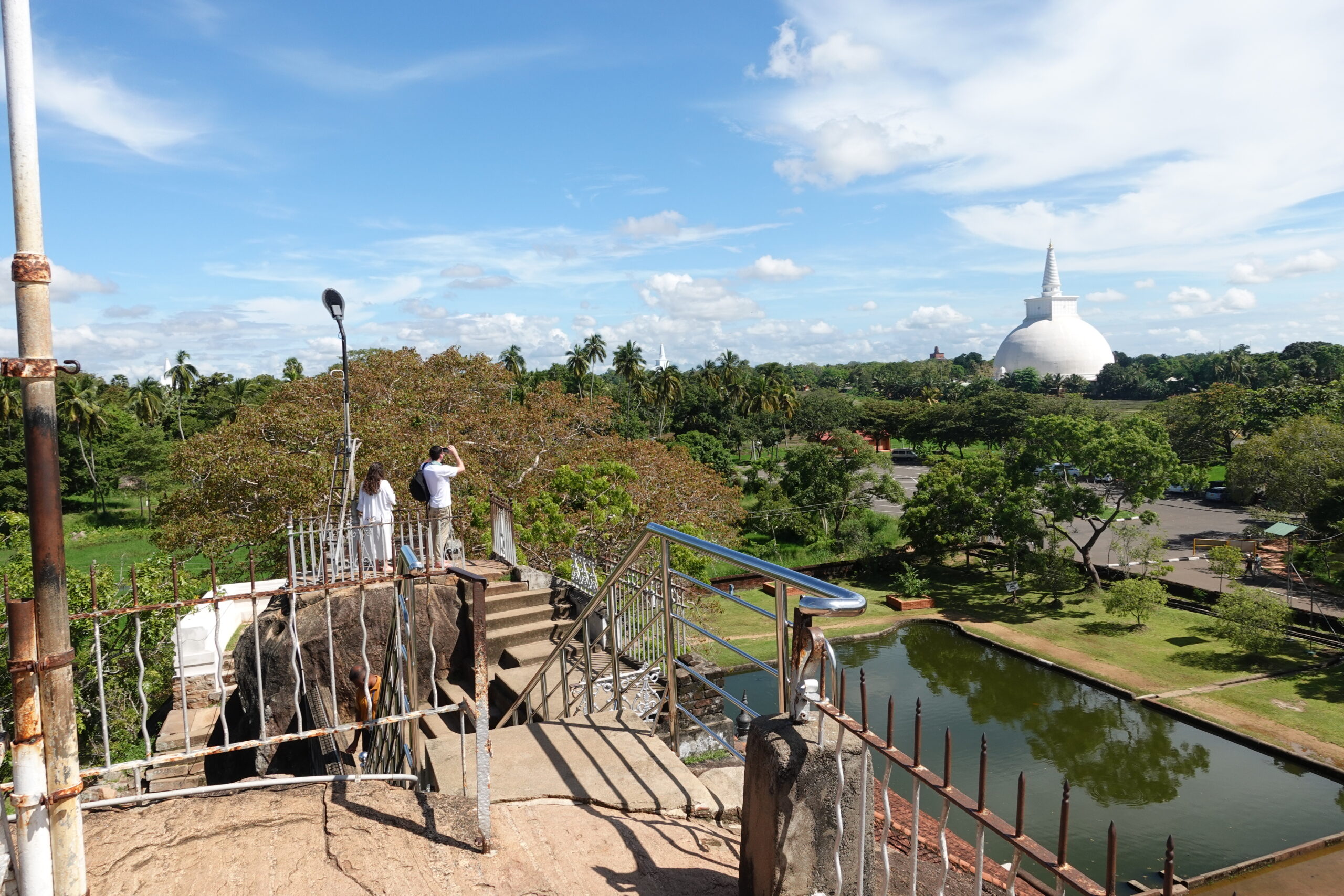(28) Anuradhapura, the ancient capital of Sri Lanka - Visit to the holy place of Theravada Buddhism where the Bodhi tree from Bodh Gaya stands
The day after immersing myself in the mythical world of Mihintale, I finally made my way to Anuradhapura, the holiest of the holy places of Sri Lankan Buddhism.
Anuradhapura was the ancient capital of Sri Lanka from around the 5th century BC to the 11th century AD.
Previous Article(27) Visiting Mihintale, the sacred place where Buddhism was first introduced in Sri Lanka: A Mythical World Worthy of the Sacred Name!Anuradhapura is the home base of King Tissa, who appeared in the "Anuradhapura: The History of Anuradhapura. After meeting Mahinda the Elder, King Tissa was converted to Buddhism and immediately ordered the construction of a Buddhist monastery and stupa in the capital. Anuradhapura was thus developed as the center of Sri Lankan Buddhism.
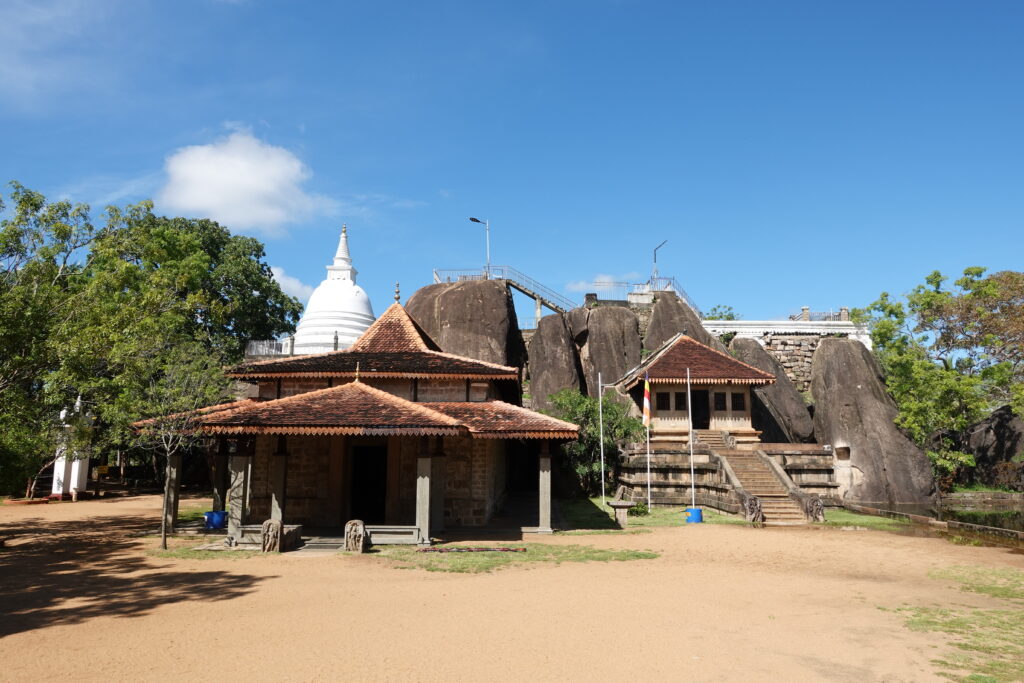
This is the monastery called Islemunia Seishasya. This monastery is said to have been built on the order of King Tissa and is known as one of the oldest Buddhist monuments in Sri Lanka. However, the building you are seeing now was built in recent years. I will tell you more about the background of this area later.
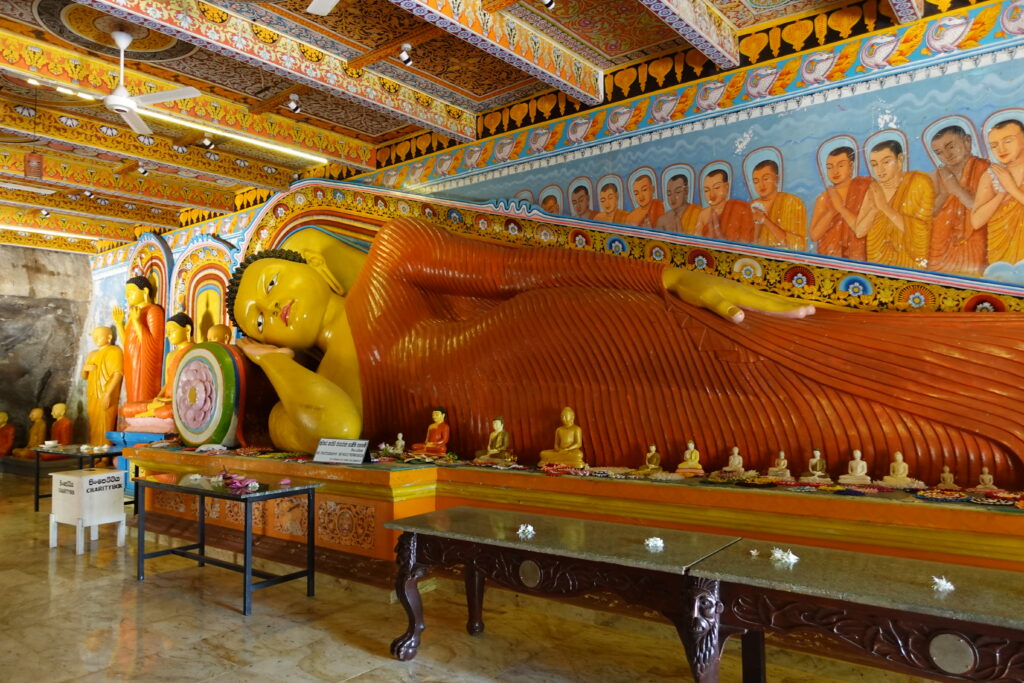
A huge reclining Buddha statue lies in the hall, and as you can see, it is quite new. The wall paintings are also obviously new.
For Japanese people, who tend to be attracted to old, blackened, vintage Buddhist statues, it is honestly hard to get used to them.
In fact, like the monastery, this Buddha image was installed in recent years.
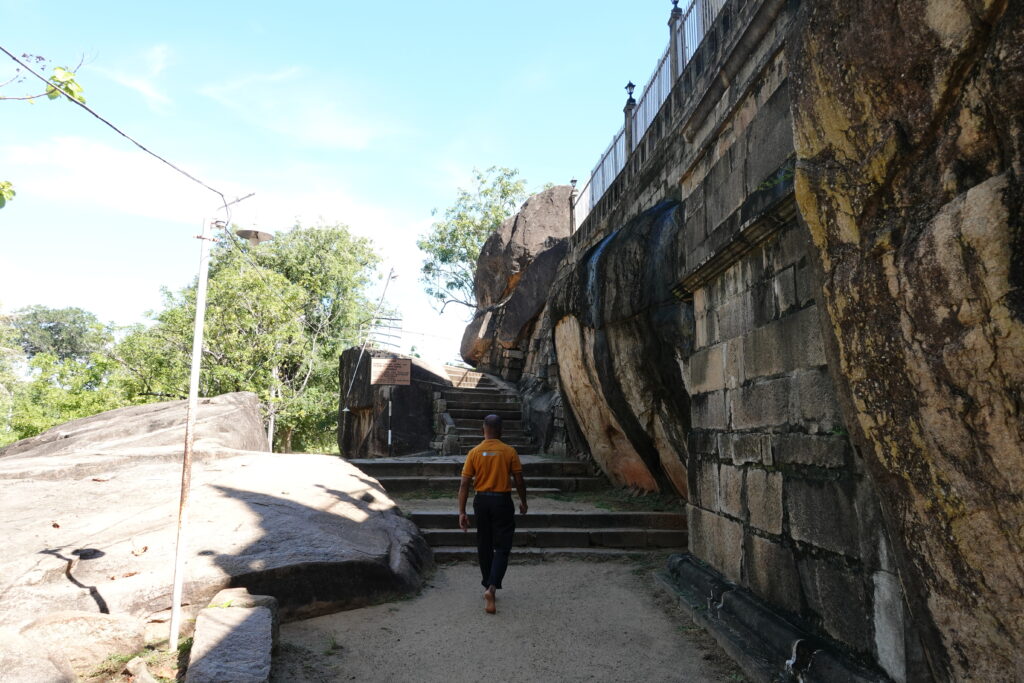
If you go around to the back side of the monastery, you can reach the monastery rooftop on top of the rock.
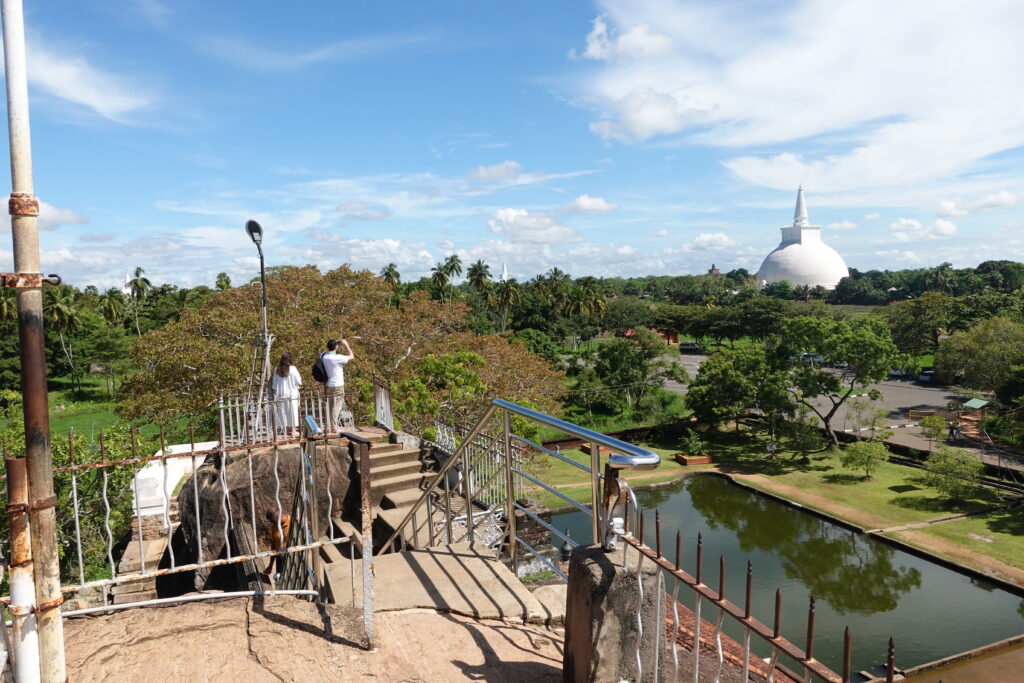
I saw a huge white chedi right in front of me from the rooftop of the Isulmuniya Seishasya. I thought, "Wow, this is really a beautiful view typical of Sri Lanka," but it turned out to be a recently built chedi. Moreover, this chedi was built by the infamous former President Rajapaksa.
President Rajapaksa was a man whose corruption and misadministration had caused public outrage, so much so that an unprecedentedly large demonstration was held in 2022 as mentioned in the news above. The guide told us that Rajapaksa had built this chedi in his honor at the expense of a large amount of taxpayers' money. The anger of the Sri Lankan people is quite deep-rooted. That is why few people visit this huge chedi.
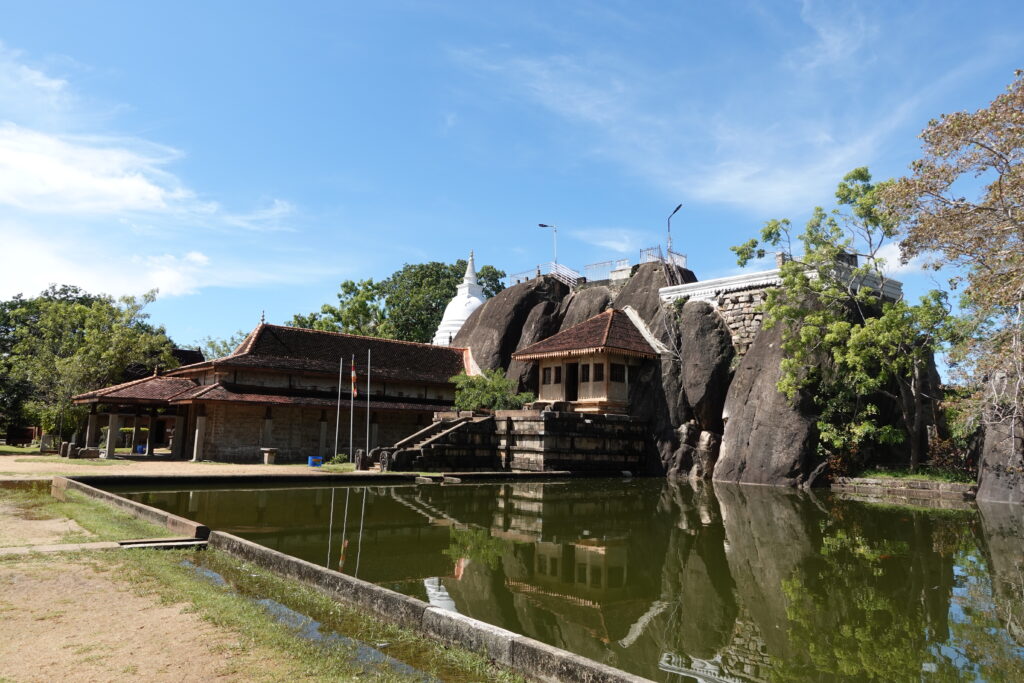
The very front angle of the rooftop. Can't you feel the integration of the monastery and the rocky hill?
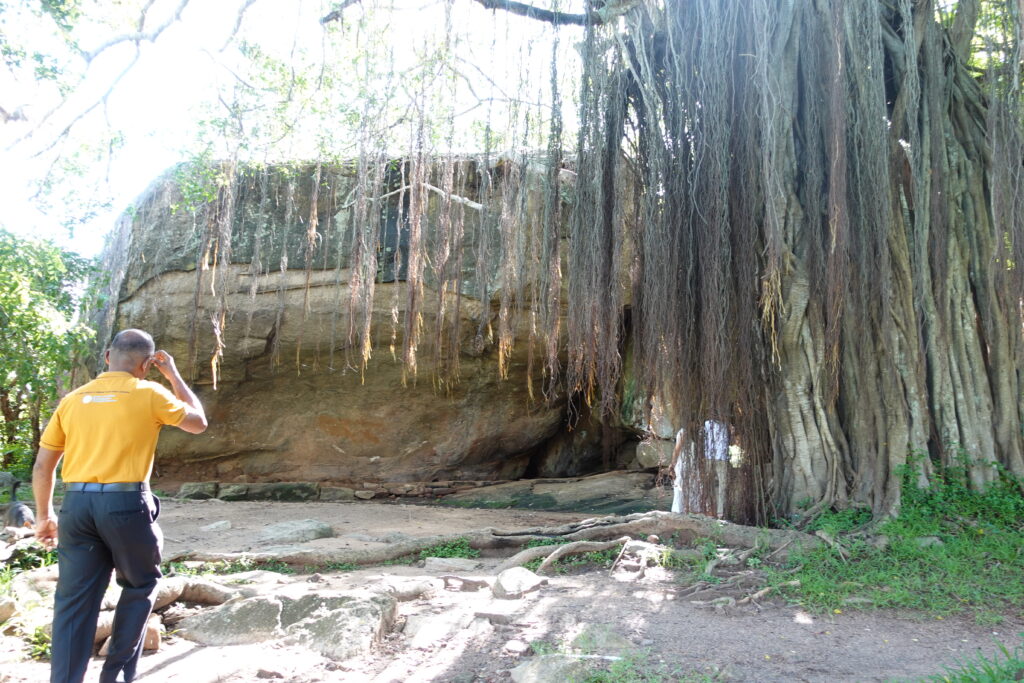
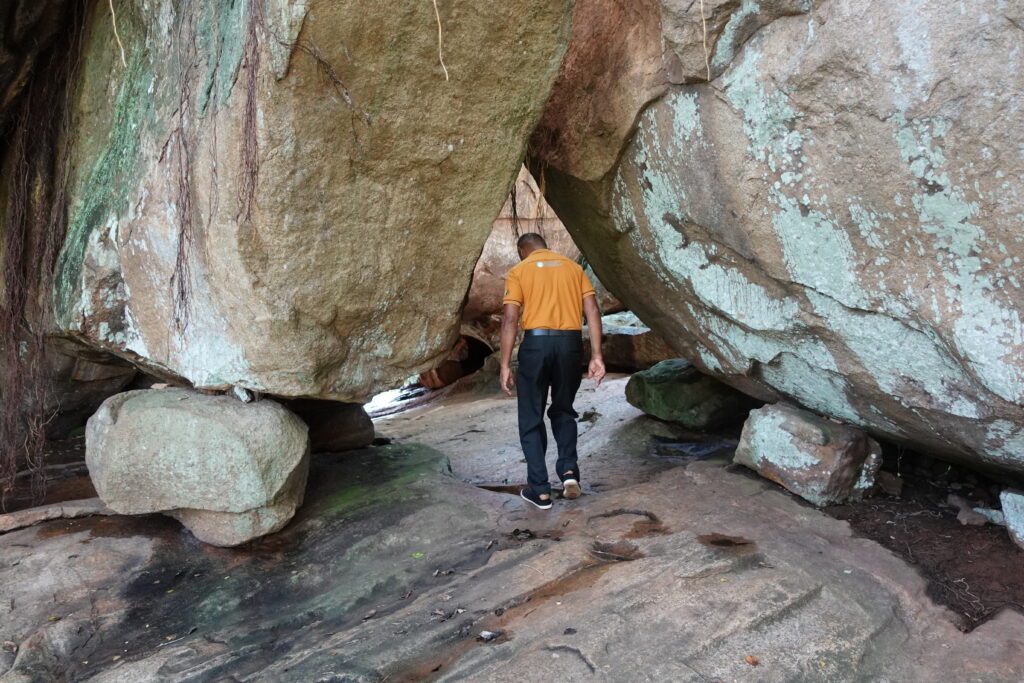
Near the Isulumuniya Temple are the ruins of a group of monasteries called Vessagiriya, which were once monasteries dating back to the reign of King Tissa. It is said that this was also a monastery from the time of King Tissa.
It was a forest surrounded by trees, with huge rocks stacked one on top of the other. Many ordained practitioners used these rocky mountains to shelter from the wind, rain, and heat, and to live together.
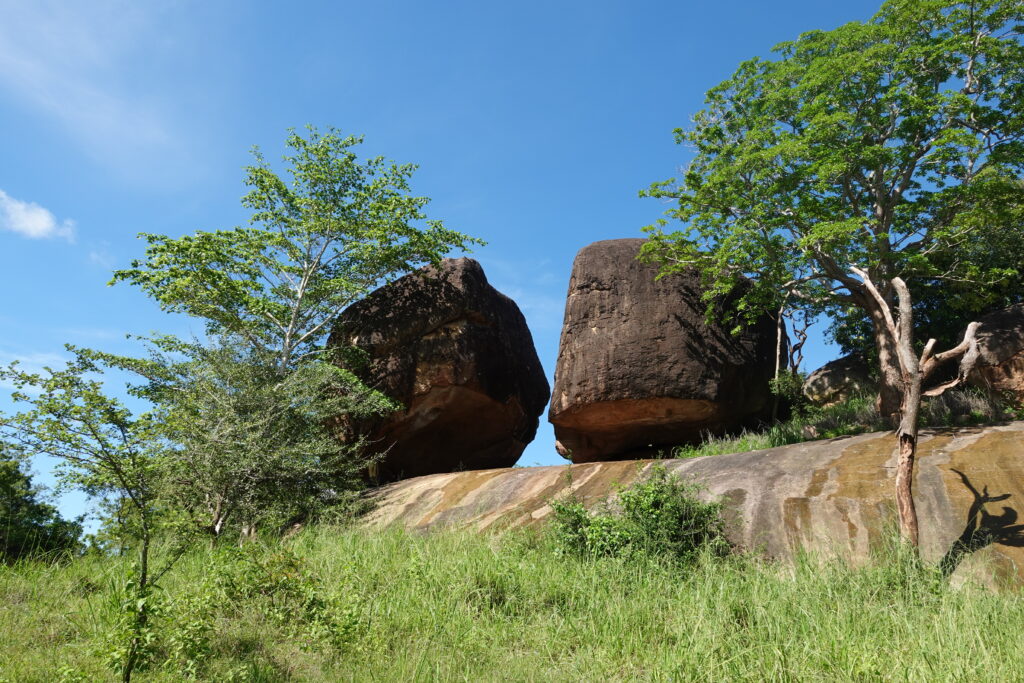
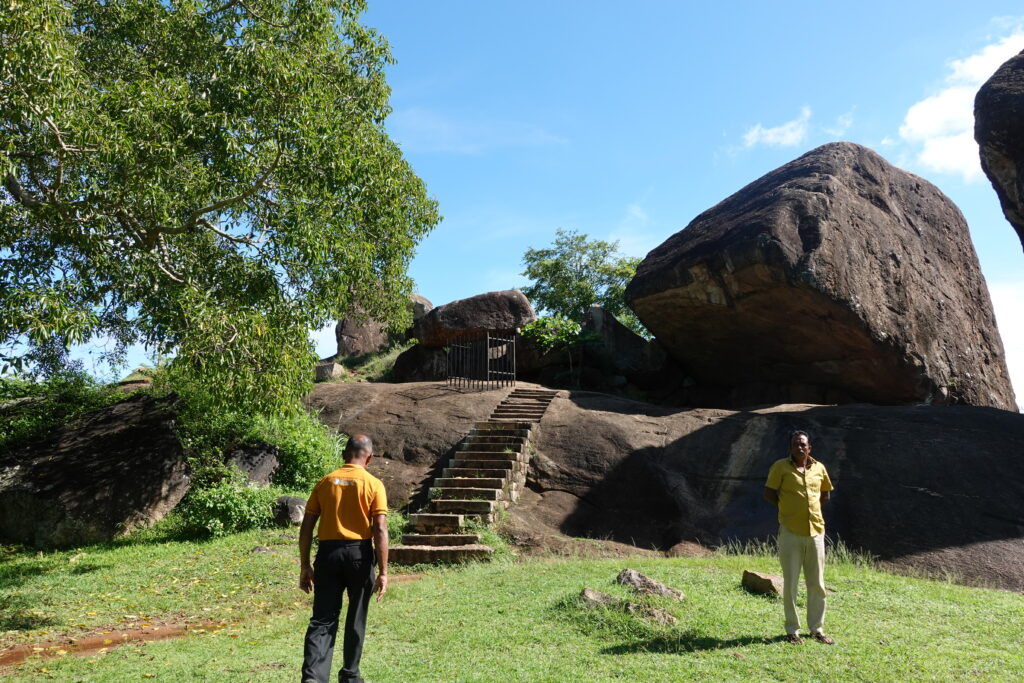
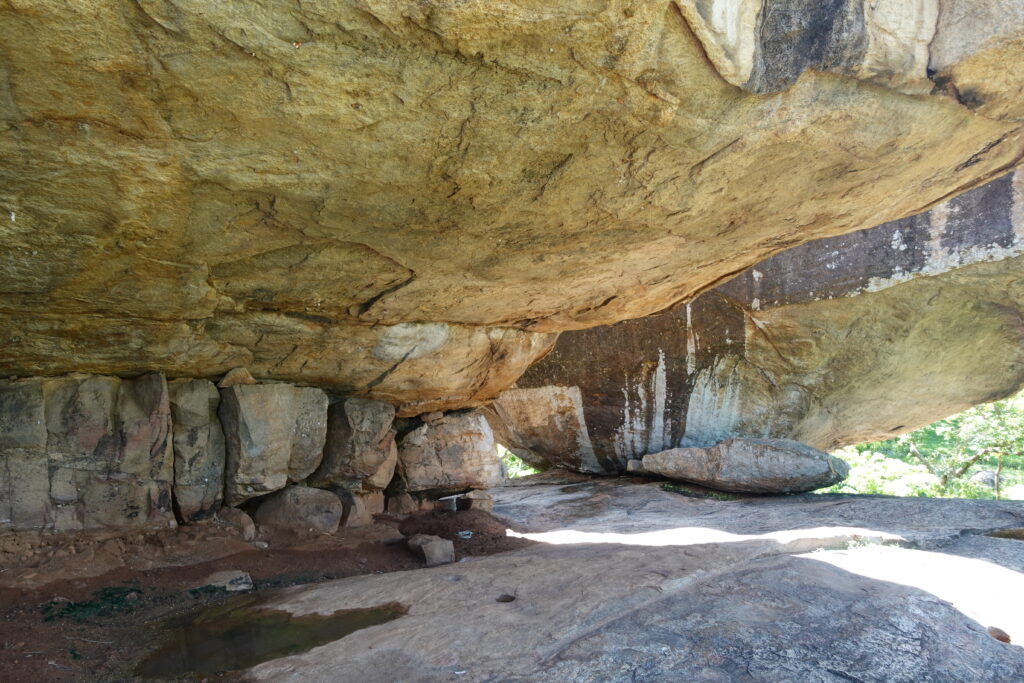
It is true that the shade is well provided, and it looks comfortable.(18) Impressed by the huge statue of Shiva at the Elephanta Grottoes off the coast of Mumbai! A white-hot example of Hindu sculpture!"As we discussed in our article on the "hot region," it is a natural air-conditioning system that is unique to hot regions.
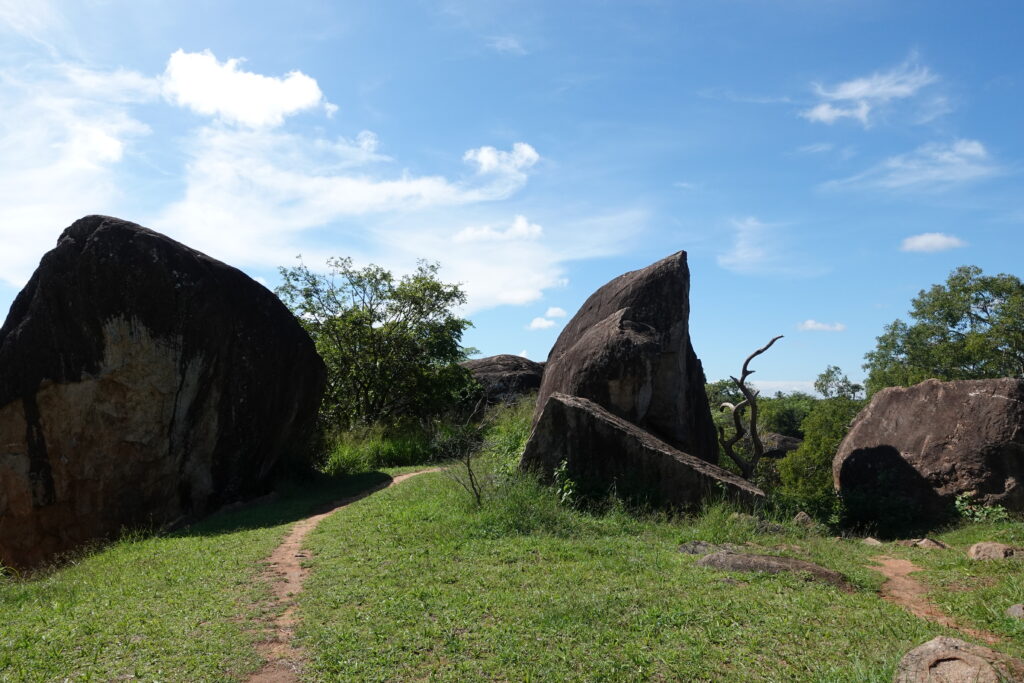
However, having reached this point, I had to realize that "a certain anxiety" within me was growing.
In fact, before I left on this trip, I was afraid of one thing.
Let me confess honestly.
I have a weak sensitivity to ancient ruins.
I just can't get excited about ancient ruins.
This was true even when I saw that Roman Colosseum.
this (something or someone close to the speaker (including the speaker), or ideas expressed by the speaker)(5) The Colosseum, a symbol of ancient Rome, and Goethe Andersen: The Romantic figure that captivated the literati.As I told you in my article on "The Ruins of Ancient Japan," I am inevitably susceptible to ancient ruins.
More to the point, I have no "archaeological sense".
When I look at ruins and ruins, I cannot see the people who lived there, like Goethe, the all-powerful poet. I cannot imagine a lively scene there.
If that is the case with the Colosseum, it must surely be the case with the Buddhist sites in India and Sri Lanka. I had such a fear. And my prediction came true.
Those of you who have been with us up to this point may have felt this in a dim way.
I was somewhat toned down in Sri Lanka after having spoken so excitedly in my articles on Indian monuments such as Khajuraho and Ellora.
Especially this(26) Sasserwa Buddha and Awkana Buddha: A visit to Sri Lanka's masterpieces in the mountains by those in the know.You can see that this was evident in the article on
That's right. I came to Sri Lanka and was completely turned off by the succession of ancient ruins. It is not that I don't like it or that I am not good at it. I felt nothing at all. (Except for Mihintaleh. (However, Mihintaleh was different.) It was not just a ruin, but a mythical place with a story behind it. In other words, it looked to me like a place of myth that is still alive today, rather than just an ancient ruin.)
This is why I feared that I would end up feeling nothing at all as I toured Anuradhapura. I also think that this is a very disrespectful attitude toward Sri Lanka, the holy land of Buddhism. However, I would like to write about it honestly in this travelogue. I have realized that this insensitivity cannot be dismissed as a mere "presence or absence of archaeological sense".
Why did I become so numb in Sri Lanka?"
This was actually directly related to the question, "What is religion for me?
It came to full expression in my mind later when I visited the "Sree Maha Bodhi Tree," the holiest of the holy places in Anuradhapura.
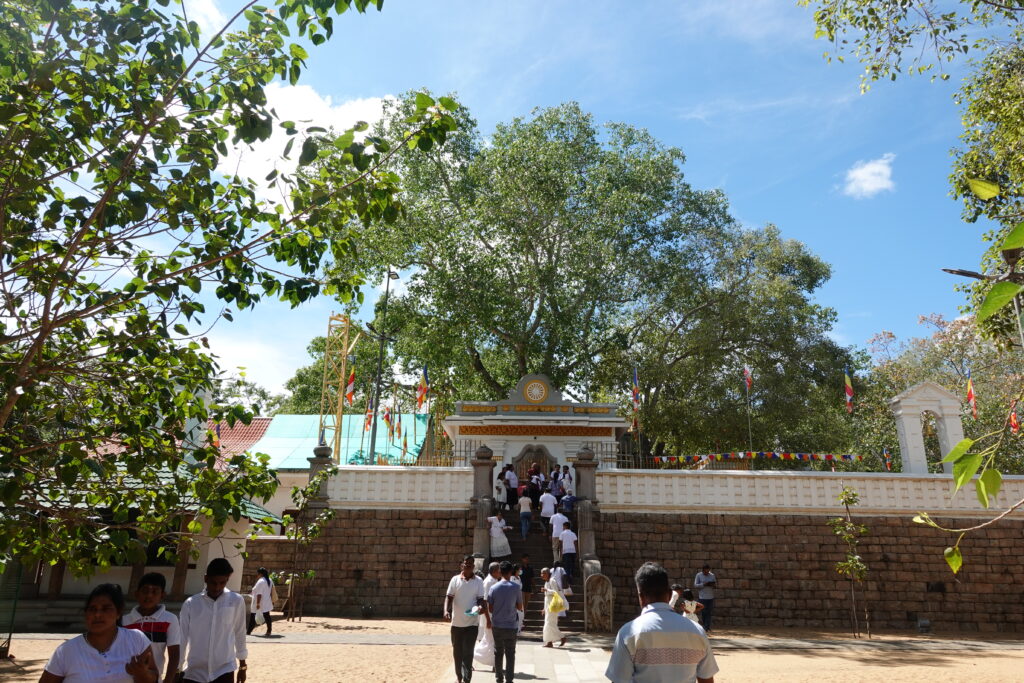
I would like to talk about my "religious numbness" through this Bodhi tree in the next article. This is not only my problem. There lies an unavoidable problem for human beings.
*Below is an article with reference books on India and Sri Lanka that we have referenced in this travelogue. Please refer to them.
periodA list of recommended reference books to help you learn about Indian history, religion, and culture."
periodA list of recommended books for "those who want to know more about Indian Buddhism."
periodA list of recommended books to help you get to know the Buddhist country of Sri Lanka."
Next Article.
Click here to read the previous article.
Related Articles











